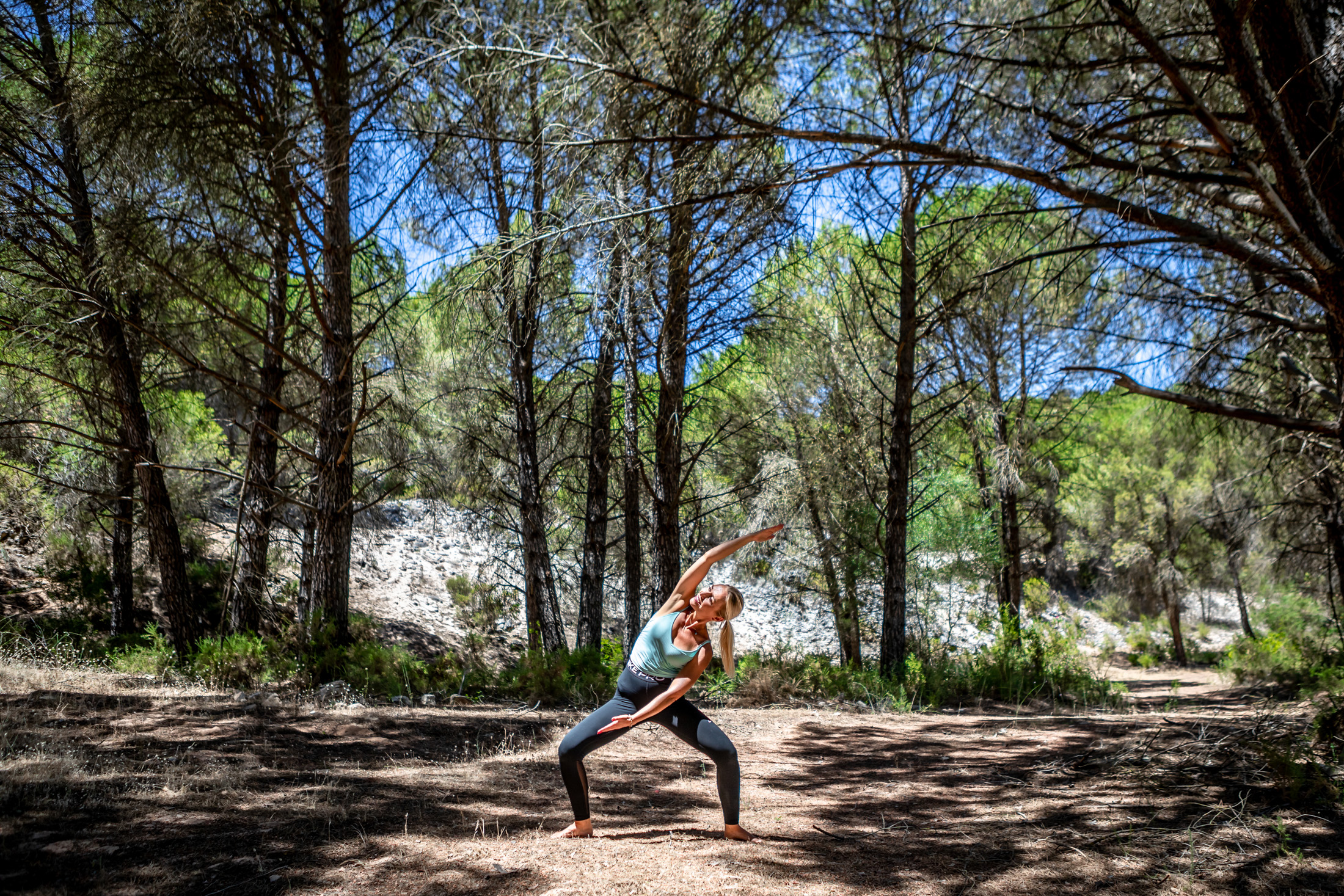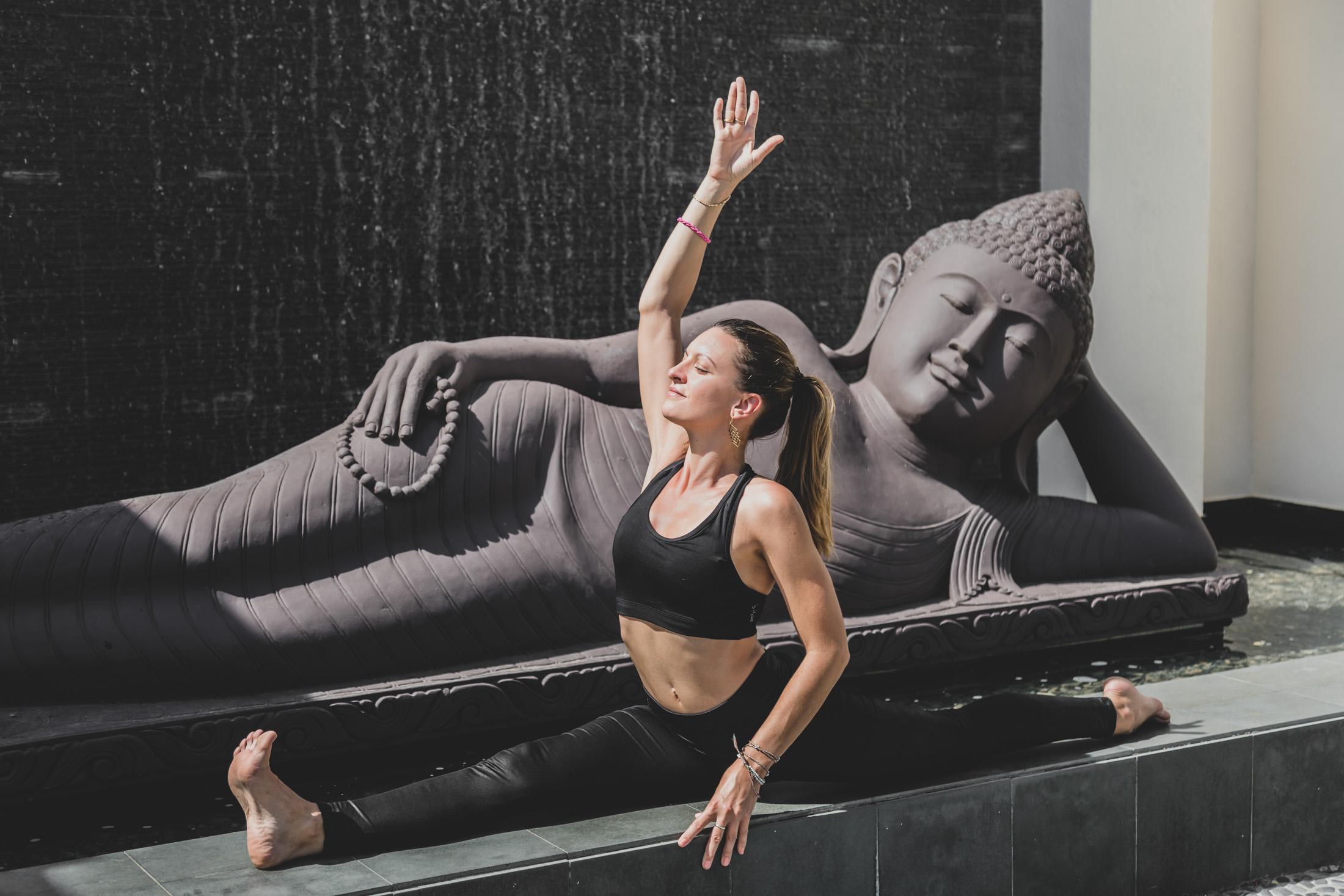Yoga For Beginners
When you are a beginner to Yoga it can feel intimidating and be difficult to know exactly where and how to get started. You may be put off that others can touch their toes and seamlessly move their bodies into all sorts of pretzel shapes and contortions. The first step is to realize this is absolutely not true! Yoga is so much more than stretching and flexibility. This is of course one of the main benefits, but more importantly the practice of Yoga builds healthy virtues and good values, such as discipline, honesty, devotion, self-inquiry and mindfulness. Yoga for beginners empowers you to make conscious choices toward living a healthier and more fulfilling life.
Yoga is in no way exclusive—being able to practice yoga does not matter how old you are, how much you weigh, what you do for a living, where you live, or what religion you practice. Yoga is accessible to everyone.
What Is the Best Yoga for Beginners?
If you are out of shape or extremely inflexible, we recommend you begin with a gentle practice until you have built up the strength and flexibility for more challenging sequences. If you are a relatively fit and flexible person, you should be able to jump right into a regular hatha yoga class. Once you are familiar with the basic postures, you can explore a vinyasa or flow class. We recommend you avoid Ashtanga, Bikram, or hot yoga until you have built up some physical strength and endurance.
The best types of yoga for beginners
Beginners Class
If you are new to yoga, the best place to start is in a beginner’s class, even if you are strong and physically fit. During this class you can take the time to learn the fundamental yoga poses like Downward-Facing Dog, Mountain pose, Child, Warrior 1 and Chaturanga which are important fundamentals. It’s also a great way to get introduced to basic breathing techniques like pranayama and meditation.
Flow or Vinyasa Yoga
Flow or vinyasa classes link physical postures with the breath, incorporating sun salutations and standing and balancing postures. Most teachers will cue movements in time with inhalations and exhalations to lead the class smoothly and rhythmically through a sequence. This is generally a free flowing, almost dance like movement, and when paired with the right music and instruction you will leave feeling relaxed and recharged.
Restorative Yoga
Expect lots of props: bolsters, blankets, eye pillows and a darkened room. Poses can be held up to 10 minutes or more with the goal to bring you into a state of deep, conscious relaxation as well as slowly improving strength and flexibility. If you are looking or relaxation and improved sleep, this is a great class for you.
Iyengar Yoga
Unlike Vinyasa Yoga, Iyengar yoga poses are held for longer periods of time. When stability is achieved in a pose, it’s then possible to safely intensify the depth of the posture. This helps to help develop strength and flexibility, along with sensitivity and awareness between the body and mind. Iyengar yoga recognises that all bodies are unique and have different strengths and weaknesses. It therefore advocates the use of props – blocks, chairs, belts, and blankets to help students to gain the correct alignment suitable for their individual body.
Yin Yoga
This class is all about relaxation and a deep stretch for ultimate zen! It is a more passive style of yoga: postures are primarily done on the floor and held for longer to allow for a deeper, grounding and more restorative practice. Most poses are supported with props like blocks, bolsters and blankets to so that you can sink deeper and release tension accumulated in the muscles and free your fascia memory. A practice for deep release of tension in tight spots and areas of holding, a deeper connection with the breath, slowing down your heart and calming the nervous system.
Private Classes
If you have specific needs and physical challenges or just a beginner to Yoga, you may want to consider taking private yoga classes. Working one-on-one with an experienced yoga teacher can help you to create a personalized practice and make sure you are doing the poses correctly.

How to Practice Yoga
- Dress comfortably- For Yoga class it’s best to wear leggings or loose/stretchy trousers, a sports bra (for women), and a yoga top that won’t fall over your head if you go upside-down. A warm sweater to put on at the end of practice – you might get cold during Savasana or meditation, even if the weather is warm. When you’re on the mat, you won’t need shoes. It’s handy to have a pair of shoes which are easy to slip on and off, like flip flops or sandals.
- Make use of props– Yoga classes may use additional props, the most common being straps, blocks, blankets, and bolsters. You don’t need to purchase these right away as you can easily substitute these items with scarves or neckties, a stack of books, and pillows. Yoga studios will provide everything that you.
- Modify for your body and needs- Particularly at the beginning, it will be difficult to accomplish every pose covered in your class. If you find that you’re having trouble, your instructor can help you modify each pose to make it easier on your body. Don’t be afraid to use blocks, straps, or blankets to make the practice right for you.
- Avoid making comparisons- Because yoga is your own journey, there is no point in checking out someone else’s progress for the sake of comparing and judging yourself to them. You can draw motivation, appreciation, and inspiration from their bodies’ capabilities; however, don’t beat yourself up if you aren’t at that point yet. Regular practice will help you get there.
- Go slow- Don’t rush yourself through each pose when you are a beginner. Yoga is purposeful, mindful, and fluid. By moving slowly, you can continue to make sustainable progress as you practice. Also, it can help prevent injury, boost your mindfulness, and improve your overall concentration.
- Focus on your foundation- Much like the foundation of a building, your hands and feet form the foundation of your body. Your body depends on having a strong and steady foundation to properly hold the poses. Pay attention to the way your hands and feet are positioned and spread your fingertips and toes to build a firm base of support. Finding a quality Yoga studio and instructor is critical in the beginning to ensure you have the right building blocks whilst also fostering a kind and compassionate environment.
How Often Should I Do Yoga for Beginners?
To start with, 2-4 beginner or slow flow yoga classes per week (60 minutes each) is a great way to dive in.
If you can practice yoga 3 or more times per week, you will see significant improvements in your flexibility, range of motion, strength, balance, inner peace, and overall wellbeing.
Naturally, the more you do yoga, the more you’ll improve. In this case, however, consistency is more important than overall length. You’ll likely see more progress when practicing half an hour every day than two hours once a week. There’s a higher chance of sticking to the habit if you’re not forcing it. Listen to your body cues. Make yoga a happy place where you’re comfortable in your own body. It should become an activity that you’ll be glad to free your time for.
The Benefits of Practicing Yoga
Participating in Yoga classes can ease loneliness and provide an environment for group healing and support. Even during 1:1 sessions loneliness is reduced as one is acknowledged as a unique individual, being listened to and participating in the creation of a personalized yoga plan.
Here are a few reasons why Yoga is so good for you:
IMPROVED FLEXIBILITY, STRENGTH AND POSTURE
Yoga helps to stretch and tone your body muscles. There is a misconception you have to be super flexible to do Yoga- at Shanti-Som we aim to show our guests that Yoga can be practised and enjoyed at all levels of ability with the singular aim to strengthen our bodies. Slowly guests can see improvement and gradual loosening so that once impossible poses now become possible. Then you will notice the aches and pains disappear.
- Strong muscles protect us from conditions like arthritis and back pain.
- Daily Yoga helps improve posture and you will soon feel you walk taller and sit up straighter.
- Yoga prevents cartilage and joint breakdown as it helps take your joints through a full range of motions.
- Yoga poses require movement backwards and forwards, with many twists which help to keep the spinal disks supple.
WEIGHT LOSS
Gentle Yoga positions fuel the metabolic system and help burn fat leading to weight loss. Daily Yoga also strengthens the mind-body connection which is important to deal with emotions that are related to issues such as using food to suppress feelings.
IMPROVED FITNESS
If going to the gym and huffing and puffing with weights is not your idea of a fun workout then Yoga can give all that a gym can but in a peaceful, safe and holistic way. Yoga is a combination of cardio and strength training.
REDUCED STRESS
Studies have shown that Yoga can help regulate the heart rate variability which means the heart rate is generally lower, giving the body the ability to handle stress more effectively. It has shown that cortisol levels become significantly lower after practising Yoga which results in lower levels of stress, anxiety and depression.
INCREASE IN ENERGY & IMMUNITY
Practising some Yoga positions each day helps to awaken the main energy centres (chakras) in your body and to circulate the blood flow, open the chest and encourage you to take in more breath.

How to Start Yoga for Beginners
You can always just include Yoga in your daily fitness routine, or if you would like to take your practice further you may like to consider a Yoga Retreat. This is a short break from the stresses of the world and allows you to reconnect with your inner self. To not have to rush from work to your Yoga class and rush home again to cook dinner for your family. A Yoga Retreat is time for yourself, to find your passions again and recharge your mind to take on every day challengers with patience and grace.
Once Yoga turns into a habit, it becomes a lifestyle. At this point, no amount of Yoga is too much. The key to beneficial practice lies in you. As long as you find time for Yoga, stay attentive to your needs, approach the practice as enjoyable and a moment carved solely for YOU to reconnect and decompress, the expected you will soon reap the benefits.

